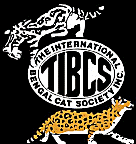Hypnotic Exotics
Call or text us: 515-974-9372
Bengals are fully Domesticated cats.
We are a small hobby breeder, with only 3 Bengals. With over 16 years of Bengal experience, we focus on quality, not quantity. Raising exotic looking Bengals that are domesticated, healthy and social. Our Bengal kittens are born and raised in our home as family members, not in out buildings or sheds. Our Bengals are F4 or higher in generation. Our kittens come with age appropriate vaccines, de-wormed,and health guarantee. Located in Iowa. Sorry but we do not ship.
For more information please:
Site updated 7/10/2025
History
The earliest mention of an ALC/domestic cross was in 1889, when Harrison Weir wrote in Our Cats and All About Them
However in 1927, Mr Boden-Kloss wrote to the magazine Cat Gossip regarding hybrids between wild and domestic cats in Malaya:
I have never heard of hybrids between bengalensis (the Leopard Cat) and domestic cats. One of the wild tribes of the Malay Peninsula has domesticated cats, and I have seen the woman suckling bengalensis kittens, but I do not know whether the latter survive and breed with the others!
The earliest mention of a confirmed ALC/domestic cross was in 1934 in a Belgian scientific journal, and in 1941, a Japanese cat publication printed an article about one that was kept as a pet.[citation needed] Jean Mill (née Sugden), the person who was later a great influence of the development of the modern Bengal breed, submitted a term paper for her genetics class at UC Davis on the subject of crossbreeding cats in 1946.
A Bengal cat displaying spotting and rosetting pattern typical of the breed: Rosetted spots occur only on the back and sides, with stripes elsewhere.
A male Bengal cat: Note the "mascara" (horizontal striping alongside the eyes) and foreleg striping, both typical of the breed.
Greg and Elizabeth Kent were also early breeders, who developed their own line of Bengals using ALCs and Egyptian Maus. This was a very successful line and many modern Bengals will find it in their pedigree.
Although it has become a popular breed, with over 60,000 cats registered with TICA, not all cat registries accept them; in particular, the Cat Fanciers' Association, one of the largest cat registries in the world, does not accept any hybrids.
New developments
Male Cheetoh cat resting next to a Bengal cat
Currently, several varieties of domestic cat are being developed from the Bengal:
The Serengeti cat is developed from crosses with Oriental Shorthair or Siamese, with the aim to produce a domestic cat mimicking the appearance of an African serval, without actually incorporating serval genes by hybridization.
The Toyger is developed from crosses with domestic cats with the aim to produce a striped "toy tiger".
The Cheetoh is an attempt to blend two existing domestic breeds of spotted cats with defined characteristics (Bengal and Ocicat), into a third breed. They are only recognized by The International Cat Association.
Long-haired Bengals
Long-haired Bengals are a throw back to the original matings where long haired cats were among those used as crosses with the Asian Leopard cat. Some current Bengals carry the recessive long haired genes and when they are mated with each other, they can produce long-haired Bengal.(See Cat coat genetics) In 2013, long-haired Bengals were granted preliminary status in the New Zeland CAt Fancy.
Bengal cat with light/white spotted belly
Bengal cats have "wild-looking" markings, such as large spots, rosettes, and a light/white belly, and a body structure reminiscent of the leopard cat. A Bengal's rosetted spots occur only on the back and sides, with stripes elsewhere. The breed typically also features "mascara" (horizontal striping alongside the eyes), and foreleg striping.
The Bengal cat is usually either classed as brown-spotted or snow-spotted (although there are more colours, brown and snow are the only colours of Bengal that the Governing Council of the Cat Fancy (UK) recognize). Within brown Bengals, there are either marble or spotted markings. Included in the spotted variation is rosetted, which consists of a spot with a dark line surrounding it. Snow Bengals are also either marble or spotted, but are also divided into blue-eyed or any other colour eyes.
The International Cat Association recognizes several Bengal colours (brown, seal lynx point, mink, sepia, silver) and patterns (spotted and marbled) for competition and shows. In the New Traits class, other colours may be shown, as well as longhairs.
Temperament
After three generations from the original crossing, the breed usually acquires a gentle domestic cat temperament; however, for the typical pet owner, a Bengal cat kept as a pet should be at least four generations (F4) removed from the leopard cat. The so-called "foundation cats" from the first three filial generations of breeding (F1–F3) are usually reserved for breeding purposes or the specialty pet home environment.
Health
Since the late 1960s—when the Bengal cat was developed through hybridization of Asian Leopard cats and domestic cats—it has gained huge popularity. The International Bengal Cat Society - TIBCS - exotic looks with spots, marbling and snow
The International Bengal Cat Society. Bengal kittens for sale in Iowa. Iowa Bengal cats.
www.hypnoticexotics.com
Related Links The Internaional Cat Association TICA
#iowabengalbreeder #Bengalbreeder
#bengalkittensIowa
Bigbrownbengal@yahoo.com
515-974-9372 Text
~ We are proud to be Bengal Cat certified ~
We are a FELV/FIV free cattery
Double click here to add text.
The Tiger King
Bengal breeder Iowa
Bengal kittens for sale
Best Bengal breeder
Tiger King: Mayhem and Madness is a 2020 true crime documentary television series about the life of Joseph Maldonado-Passage
Bengals Iowa
Iowa Bnegal breeder
Bengal kittens Iowa
#Bengals #Bengalkittensforsale #Bengalcats #Bengalcatsiowa




